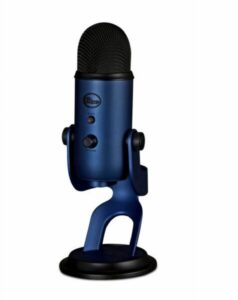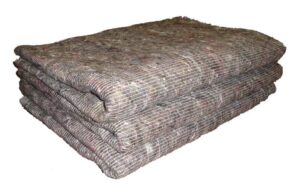As my recent voice over blog posts reveal I’ve been spending some time recuperating from eye surgery. After having to lie on my back all the time for a week (essential apparently for the kind of corneal surgery I’ve just had) I can now get up and spend a little bit of recovery time catching up with articles on the internet before fully getting back to work.
Rob Bee (audio specialist) – posted an article last month – about a number of his personal bugbears about VO studios. Quite a bit that resonated with me.
 His first complaint is with people who use a Blue Yeti mic in their recording set up and think they are professional standard. Rob points out that these mics really are not good enough quality – due to high hiss levels and a lack of clarity and detail in the upper frequencies – to be considered suitable for voice work.
His first complaint is with people who use a Blue Yeti mic in their recording set up and think they are professional standard. Rob points out that these mics really are not good enough quality – due to high hiss levels and a lack of clarity and detail in the upper frequencies – to be considered suitable for voice work.
I also share Rob’s belief that USB mics in general are not really good enough quality for professional voice work. He always encourages people to get an XLR mic and a quality audio interface and I advise people the same.
His second bug bear was actually a revelation to me of the “do people actually do this?” variety. Rob objects to people using moving blankets for audio treatment in their recording space.
Acoustic blankets can be used to tame high frequencies or flutter echo/reverberation but I had never heard of people using the blankets used by furniture removers as acoustic treatment. Rob points out how useless these blankets are for this role. I was genuinely surprised that it was even a thing – but Rob spends a lot of time visiting studios to trouble shoot issues and clearly has seen these a lot.
His third complaint was about the term “home studio”. Rob feels many people who are new to VO work will search online for arcticles on how to set up a studio at home. They will end up having created “home studios” but Rob feels – using term in an audio industry specific sense – that these are in fact project studios: they are basically hobby studios.
What you should be building is a professional studio that happens to be at home. Rob says “home studios” are not professional studios – we should stop using the term. I tend to agree with that.
 I recently worked with a voice artist who has a home studio with a USB mic, some acoustic blankets, a fanless laptop and some audio repair software.
I recently worked with a voice artist who has a home studio with a USB mic, some acoustic blankets, a fanless laptop and some audio repair software.
He has done work for a number of well known brands – but he and I were having a conversation because – after he had a client complain about the quality of his recording – he had come to record in my studio – which although in my home is as far as I can make it a professional studio that just happens to be in my home. He had found he needed the quality that you only get from investing in professional equipment and sound treatment
There is a caveat to the last point about home studios raised by Rob’s partner Helen who works on website design – she points out that many people these days are searching for voice artists with their own recording facilities .
They will almost certainly search using the term “home studio” – so for SEO reasons you do need to mention is on your website – but you should try to differentiate yours from the hobbyist studio by referring to “broadcast standard” or “professional quality”.
You can read the whole article on Rob’s website here
Chris Radley – Voice Over